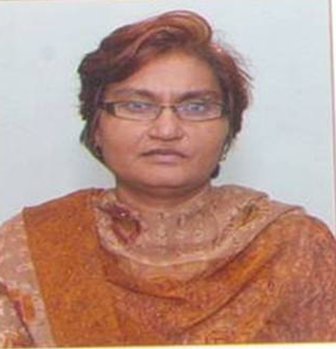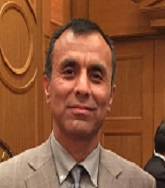Scientific Program
Keynote Session:
Title: Coronary Flow Regulation by adenosine its signaling.
Biography:
S Mustafa Jamala is a Professor of Pharmacology at West Virginia University School of Medicine and a Senior Advisor to the Pilot Core of the West Virginia Clinical Science and Translational Institute. I served as an Assistant Dean for Research and the Health Sciences Center from 2005-15. I received Dean’s Award for Excellence in Research from School of Medicine in 2008 and became a Robert C. Byrd Professor in 2010. In addition, I received Chancellor’s Award for Outstanding Achievement in Research and Scholarly Activities from HSC in 2013. I have published over 200 manuscripts. Our past work has led to the approval of an A2A selective AR agonist (Lexican®) for myocardial perfusion imaging. Currently, we are using AR and β adrenergic receptor KOs to better understand the relationship between these receptors in coronary flow regulation.
Abstract:
Adenosine acts through its receptors (A1, A2A, A2B, and A3) via G-proteins and causes an increase in coronary flow (CF) mostly through A2A AR. However, the role of other ARs in the modulation of CF is not well understood. Using KOs, we investigated the role for each AR in the regulation of CF. Using the isolated heart from A3 KO mice; we reported an increase in A2A-mediated CF. Similarly, we found an increase in CF in A1 KO mice with A2A agonist (CGS-21680). Also, in A2A KO mice, response to CGS was abolished. On the other hand, A2A KO mice showed a decrease in CF to NECA (non-selective agonist). BAY60-6583 (A2B selective agonist) was without an effect on CF in A2B KO mice; however, it increased CF significantly in A2A KO. CGS also caused a significant increase in CF in A2B KO mice. Also, exogenous adenosine-induced increase in CF in WT, A2A KO, and A2B KO mice were significantly reduced with catalase. BAY-induced increase in CF in WT was significantly inhibited with glibenclamide. Overall, our data support stimulatory roles for A2A and A2B and inhibitory roles for A1 and A3 in the regulation of CF. These observations provide new evidence for the presence of all four ARs in CF regulation. We propose, that activation of A2A/B may release H2O2 which then activates KATP channels, leading to vasodilation. These studies may lead to better understanding of the role of ARs in coronary disease and may lead to better therapeutic approaches
Title: Expandable polyurethane stent valve is a reliable prosthesis for transcatheter implantation in children suffering from heart valve disease? Results of physical, hydrodynamic and experimental tests.
Biography:
Dr. Miguel Angel Maluf was born in Córdoba, Argentina in 1950. He has graduated from Universidade Nacional de Córdoba, Argentina and become a medical doctor in 1973. Dr. Maluf did specalization in Cardiovascular Surgery at Instituto do Coracao (INCOR) – São Paulo, Brazil. His Surgical Fellowship training was finished by defending the Master’s, Dosctoral and Postdoctoral thesis, in the Cardiovascular Division at Universidade Federal de São Paulo, Brazil. He research includes development of several models of biological cardiac prosthetic to remodeling of the right ventricle outlet tract, in congential heart disease. Dr. Maluf has more than 25 internattional plus 40 national publications, as well as 80 international and 250 national presentations and more then 11 book chapters related to his research areas. Currently he works as Associate Professor of the Cardiovascular Division at São Paulo Federal University.
Abstract:
Introduction: Transcatheter valves manufactured using biological tissue, as the essential structural component, can be induced to: mechanical degradation after crimping and early calcification in pediatric patients.
Objectives: Manufacture and successful tests of one expandable polyurethane stent valve, may reduce the repeated operations of valve replacement, during the growing children.
Material / Methods:I-Physical testing.Prostheses were submitted to universal testing in machine EMIC and a computer with Tesc software, able to generate graphs of force versus deformation (stretching) II-Hydrodynamic testing. Prostheses with diameters from 12 to 22 mm, were submitted to pulsatile physiological flow and stress conditions.III-Experimental implants in sheep.Ten sheep was submitted to prosthesis implant, by trans catheter technique in pulmonary position.In Group A: Four sheep w/ <20 kg, the stent was expanded up to 18mm and in Group B: Six sheep w/ > 20 kg, expanded up to 22mm.
Results: Physical and Hydrodynamic testing of Polyurethane strip removal of stent valve, before and after undergoing to 30 minutes crimping, showed preservation of properties of resistance and elasticity elongation. In vitro durability was proven for >15 years. Eight sheep, were submited to 3D echo study, performed in the 6th month of f.-up, showed: there was no significant transvalvular gradients and trivial regurgitation in 3 cases. Histologic, radiologic and electron microscopic study of the first prosthesis shows: integrity of structure and free of calcification. Seven survival sheep are well, after 24th months of follow-up.
Conclusion: Expandable polyurethane stent valve, with special design for implant and expansion in growing children, has experimental satisfactory hemodynamic performance and durability in vitro and in vivo tests. Calcification and structural changes were not observed. In the next step, clinical studies are be planned.
Title: Improving Cardiac Protein Quality Control as a Novel Therapeutic Strategy
Biography:
Dr. Wang had studied/worked in biomedicine for 14 yrs in Wuhan, China before his relocation to the US in 1994. Dr.Wang was appointed as Assistant Professor in 2001, promoted to Associate Professor in 2005, tenured in 2006, and became full Professor and Director of the MD/PhD program in 2006
Abstract:
Targeted removal of damaged/misfolded proteins in the cell is primarily performed by the ubiquitin-proteasome system (UPS). When escaped from UPS-mediated degradation, misfolded proteins tend to form aberrant aggregates which are no longer accessible by the proteasome and are generally believed to be removed by macroautophagy. Remarkable accumulation of myocardial ubiquitinated proteins and autophagosomes are observed in human heart failure of nearly all causes, indicative of UPS and autophagic dysfunction in the development of cardiac failure. The creation of stable cell lines, adenoviruses, and stable transgenic mice expressing a surrogate UPS substrate, such as green fluorescence protein (GFP) modified by fusion with degron CL1 (known as GFPu or GFPdgn), has made it possible and convenient to monitor dynamic changes in UPS performance in situ or in vivo, and thereby enabled my lab to demonstrate for the first time in intact animals that increases in misfolded proteins and resultant aberrant protein aggregation impair UPS function and cause proteasome functional insufficiency (PFI). Similarly, we and collaborators detected cardiac UPS functional insufficiency in acute ischemia/reperfusion (I/R), chronic pressure overload, and diabetic cardiomyopathy.
Using both gain- and loss-of-function approaches, we were able to demonstrate that PFI is a major factor underlying UPS malfunction and plays an important pathogenic role in heart disease with increased proteotoxic stress such as proteinopathy, I/R injury and diabetic cardiomyopathy in mice.
Furthermore, we have discovered that cGMP-dependent kinase (PKG) positively regulates the proteasome in cardiomyocytes, PKG activation by either genetic or pharmacological means, such as phosphodiesterase 5 (PDE5) inhibition, promotes proteasome-dependent degradation of a surrogate and a bona fide misfolded protein in cardiomyocytes, and PDE5 inhibition by sildenafil reduces misfolded protein abundance and aggregation and slows down disease progression in a well-established mouse model of cardiac proteinopathy. We have also collected strong evidence that the protection of PDE5 inhibition against I/R injury depends largely on improving proteasome function. Muscarinic receptor activation can enhance cardiac proteasomal function in a PKG dependent manner. These findings demonstrate the feasibility to use pharmacological method to enhance UPS-mediated degradation of misfolded proteins and thereby to treat heart disease with elevated misfolded proteins. A good body of evidence has also demonstrated that increasing autophagy is beneficial to the treatment of most heart diseases. Hence, improving cardiac protein quality control through UPS enhancement and increasing autophagic flux has emerged as a promising novel therapeutic strategy warranted for translational studies.
Title: Analysis of myocardial bridge in males and females of North Indian Population- An angiographic study
Biography:
Rajani singh had done MBBS and MS (Anatomy) from MLN Medical College University of Allahabad. Having experience of 14 years teaching to medical graduates and post graduates in prime medical institute of India, currently I am Additional professor of Anatomy in AIIMS Rishikesh Dehradun. 65 quality publications in reputed national and international journals are to my credit. Not only represented KGMU and AIIMS at 9 International and 15 national conferences of Anatomy but also awarded memberships of 4 internationally popular and 3 national anatomical societies. Besides being editor of Archives of Anatomy and Physiology India, Scientific pages Anatomy and Physiology, USA and Anatomy and Physiology open access, I am working as a member of editorial board of Clinical Anatomy, USA and member of Advisory board of OA Case Report London. I wrote one chapter on Microanatomy of nerves to illiacus on invitation for ‘E-book of Human Anatomy at glance’ to be published by Austin Publication USA. I received best researchers and best paper awards.
Abstract:
Myocardial bridging (MB) is congenital anatomic variation in which a band of cardiac muscle covers a part of an epicardial coronary artery. The artery under the cover of myocardium is known as ‘tunnelled segment’.
The clinical implication of myocardial bridging is a debatable subject since early 1960s at the introduction of coronary arteriography. Myocardial bridge is considered benign by many authors but recent literature describes it as associated with various clinical conditions such as myocardial ischaemia, circulatory problems, angina, myocardial infarction, sudden cardiac death, systolic compression and other cardiac insults that may require surgical intervention. It is also said that myocardial bridges has ‘protective effect’ from atherosclerosis within the coronary artery that is bridged when compared with uncovered vessels of the same heart.
The present study is aimed to analyse the presence of myocardial bridges over coronary arteries and their branches by coronary angiography. 380 coronary angiographs consisting of 292 male and 88 females were analysed retrospectively for the presence of MB on the coronary arteries and their branches in department of Anatomy and cardiology, AIIMS Rishikesh. 20 MBs was observed in 19 cases (2 females and 17males) out of 380 cases of angiographs (88 females and 292 males) constituting 5.26 %. Single MB was observed in 18 cases and two MBs were observed in one case. In 18 cases, MB was observed only on LAD while in one case, both LAD and LCX were covered by MB. Length of MB ranged between 12mm to 30 mm with mean 21.5 ± 2.12. Percentage reduction of diameter and area of coronary artery covered by MB ranged between 22.9- 78.69 and 40.48- 95.5 respectively. In our case all the patients with MB were having coronary artery diseases except one. Thus isolated MB may be benign anomaly but it is definitely a contributing factor in causing various coronary heart diseases. It is great challenge to cardiologist to detect symptomatic patients with MB and to plan better therapeutic and surgical interventions. An optimal use of new non-invasive diagnostic methods in combination with invasive methods will enhance our understanding of this anomaly and help in reducing the mortality.
Title: Surgical aortic valve replacement remains the 'gold standard' in comparison to transcatheter aortic valve implantation (TAVI)
Biography:
Dr. Hatem Al-Masri is a cardiac critical care intensivist and consultant of cardiac surgery. Dr. Al-Masri completed his medical degree (M.D.-Doktorate) at Charles University – Faculty of Medicine, holds a degree in biochemistry from the University of Waterloo - Canada, completed his residency training in Germany (Leading Facharzt) and holds training fellowships in Cardiac Surgery from IJN KL Malaysia, Switzerland, and Canada. Dr. Al-Masri is the author of an award-wining medical research paper titled “Hemodynamic Support Requires Integrated Approach Comparing LVAD vs. IABP in Patients Experiencing Left Venticular Failure” (Best Paper of Young Cardiac Surgeon) at the 8th International Congress of Update in Cardiology and Cardiovascular Surgery (UCCVS 2012) awarded by European Society for Cardiovascular Surgery, World Society of Arrhythmias (WSA ) and the Society of Cardiology and the International Academic of Vascular and Endovascular Surgery (ISCP). Dr. Al-Masri is a member of the Medical German Association, Malaysian Medical Association and the Saudi Medical Council.In addition to, Saudi Medical council.
Abstract:
Background :
Surgical AVR is the treatment of choice for patients with symptomatic severe degenerative aortic stenosis, as it offers both symptomatic relief and the potential for improved long-term survival . An increasing number of elderly patients with multiple comorbidities are referred for transcatheter aortic valve implantation (TAVI), partly due to the perceived high risks of surgery. These include in particular patients who have had previous cardiac surgery. The study aim was to compare the outcomes of patients with aortic valve disease ,
METHODS:
All patients aged > 76 years that underwent a procedure for severe aortic stenosis with or without coronary revascularization at the authors' institution were included in the study; thus, 308 patients underwent previous cardiac surgery was allocated to TAVI TAVI and 192 underwent previous surgery and subsequently had redo surgery AVR. Patients in the TAVI group were older (mean age 87 ) . Treatment modalities were chosen for individual patients according to their EuroSCORE and had a higher logistic EuroSCORE .
Results:
a total of 500 patients was discussed ,of these patients, 192 underwent TAVI, 308 of whom had undergone previous cardiac surgery Twenty one patients (10%) died during the procedure in the TAVI group, and 32 (13%) died in the AVR group . Predictors for mortality were: age, female gender and surgical valve replacement .Gradients across the implanted valves at one to three months postoperatively were lower in the TAVI group .
Conclusion :
Surgical aortic valve replacement remains the 'gold standard' treatment for aortic valve disease.Improved risk stratification in patients with aortic valve disease and re-do cardiac surgery is required .AVR and TAVI will likely be offered to different groups of patients Transcatheter aortic valve implantation is the treatment of choice for symptomatic aortic stenosis in the unacceptably high-risk or inoperable patients, and is a reasonable option for high-risk patients in general.
Oral Session 1:
- Heart Conference | Cardiology conference | Heart Meeting | Cardiovascular Conference | Stroke Conference
Title: Role of High paratharmone level as a Risk factor for cardiac Dysfunction in Hemodialysis Patients..??
Biography:
Yasser Elsayed is a Professor at alazhar University.He was appointed as Assistant Professor in 2001, promoted to Associate Professor in 2005, tenured in 2006, and became full Professor and Director of the MD/PhD program in 2006
Abstract:
TBA
Title: Is wide complex tachycardia still diagnostic challenge at EP lab?
Biography:
TBA
Abstract:
Introduction
The differential diagnosis of wide complex tachycardia(WCT) is wide and complex. Accurate identification of the tachycardia mechanism is essential for successful ablation. We study the role, accuracy and usefulness of specific pacing maneuver that can simple and immediately Clarify the tachycardia mechanism in the electrophysiology laboratory.
Methods
28 patients (33.1+11.9 years) with documented WCT underwent conventional EPS. During the tachycardia, atrial overdrive pacing was performed. The following responses were observed: (1) a change of the QRS morphology during atrial pacing and (2) the first return electrogram of the tachycardia, whether occurring in the atrium (AVA response) or in the ventricle (AVVA response). The postpacing interval will be measured from the first paced atrial electrogram to the first arrived atrial electrogram at the pacing site.
Results:
Atrial overdrive pacing was successfully performed in all patients. It was associated with eithera change or narrowing of the QRS in all ventricular tachycardia (VT) patients but not in supraventricular tachycardia (SVT) patients. All VT patients had an AVVA response upon cessation of atrial overdrive pacing as opposed to AVA response in SVT patients, P = (0.00)
Conclusion:
The response to atrial overdrive pacing during WCT with 1:1 AV relationship can rapidly diagnose or rule out VT as a mechanism of tachycardia and diagnose wide complex tachycardia mechanism
Title: Association between Helicobacter pylori infection and cardiovascular risk factors among patients in Andkhoy Afghanistan
Biography:
TBA
Abstract:
Background: The association between Helicobacter Pylori (H. pylori) infection and cardiovascular risk factors remains controversial. The high prevalence of H. pylori infection among Afghan patients facilitates to investigate this association. The aim of the present study was to determine the association between H. pylori infection and cardiovascular risk factors among patients visiting an outpatient clinic in Andkhoy, Afghanistan.
Materials and Methods: We performed a cross-sectional study of 271 consecutive patients in an outpatient clinic in Andkhoy, Afghanistan from April 2017 to June 2017. The diagnosis of H. pylori infection was achieved using the enzyme-linked immunosorbent assay (ELISA) test. The patients were divided into H. pylori positive (n=189) and H. pylori negative (n=82) groups. The association between H. pylori infection and cardiovascular risk factors was analyzed.
Results: Of the total 271 study participants, 102 (37.6%) were males and 169 (62.4%) were females. The mean age of the patients who were H. pylori-positive and H. pylori-negative was 51.0 ± 17.6 years and 51.6 ± 17.6 years, respectively. In multivariate logistic regression analyses, H. pylori infection was significantly associated with Diabetes mellitus (DM) (odds ratio [OR] 3.16, 95% confidence interval [CI] 1.31-7.62, P = 0.011), BMI (body mass index) levels (OR 1.17, 95% CI 108-1.26, P < 0.001).
Conclusions
Our study indicated that H. pylori infection was significantly associated with DM and BMI levels in an outpatient clinic in Andkhoy, Afghanistan. More aggressive measures, including DM, obesity control, and H. pylori eradication should be needed.
Title: Cath lab cases management,New intervention device for structural heart diseases
Biography:
TBA
Abstract:
TBA










